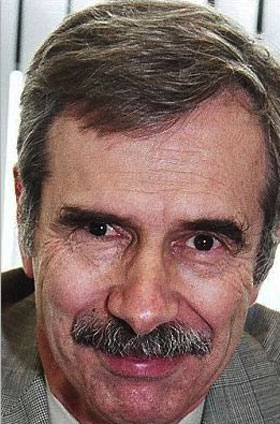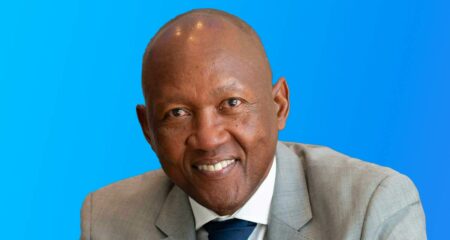
Convergence Partners’ recently published research report, “Let My People Go (Online)”, summarised in this piece on TechCentral, presents a provocative but nevertheless incomplete and in some critical aspects misleading characterisations of the requirements and opportunities for ensuring powerful, affordable and widespread broadband access to South Africans.
In the report (available as a PDF), the authors fail to address the critical differences between as well as the primarily complementary roles of wireless and wired (increasingly fibre-intensive) broadband access infrastructure that must be considered in the formulation of productive and realistic broadband plans, policies and regulations.
The proposal to rely on wholesale, open-access wireless networks alone as the solution for current deficiencies in broadband in SA is a dangerous distraction from more fundamental reforms and initiatives that are needed in government policies, regulatory practices, and the incentives and opportunities perceived by large as well as small players that can build on existing, albeit too often mismanaged, but nevertheless significant, existing assets of network facilities and human resources.
Spectrum management in SA leaves much to be desired, as the Convergence Partners’ report emphasises. The allocation and use of finite or scarce spectrum resources exerts a critical influence on the broadband landscape, which must be redirected.
However, the report fails to recognise that wireless broadband on its own or as the primary channel for carrying broadband traffic will be far from sufficient to satisfy the growing broadband needs and aspirations of African customers and organisations. It also dismisses auctions as a process for the assignment of spectrum, ignoring their positive aspects as well as the negative aspects of alternative processes.
A more nuanced and thoughtful assessment is needed to decide which process or processes are most likely to yield productive outcomes for SA.
Wireless is inevitably more complementary than competitive to wired technologies, or, in future, “fibred” broadband access. The laws of physics dictate that wireless can never carry more than a minor portion of the total broadband traffic that will be generated as Africa’s economies and the incomes and skills of its inhabitants expand and improve.
In contrast to the narrowband era (dominated in terms of bandwidth consumption by voice calls), mobile cannot be a complete substitute for fixed services in the age of broadband. Although the number of wireless broadband connections or subscriptions is already and will remain far larger than the number of fixed broadband connections, the volume of traffic carried by the latter will and must be far greater than that which radio access networks can conceivably support.
Furthermore, shared wireless channels cannot deliver the highest speeds to individual users (tens or even hundreds of megabits per second) that fibre connections can provide.
It is therefore at least as important to remove the formidable interrelated obstacles in terms of policies, market structures and regulatory effectiveness to the growth of widespread and effective fixed broadband access in SA as it is to tackle the serious deficiencies in the management and allocation of spectrum and gaps in the delivery of wireless broadband services.
Auctions and alternatives
The Convergence Partners report points out correctly that spectrum auctions designed, as in India, with the goal of generating maximum revenues for a national fiscus from spectrum licenses are bad policy. But this finding does not justify a conclusion that auctions are inevitably a bad process for assigning spectrum and that a different process must therefore be adopted.
Auctions and alternatives such as beauty contests or direct assignments of spectrum all have their advantages and disadvantages. They can all be implemented poorly so they produce undesirable and harmful outcomes instead of leading to productive and efficient uses of the finite or scarce resource of spectrum. Decisions about how best to allocate and reallocate spectrum in SA should only be reached after serious and objective assessments of the respective merits and risks of these alternatives.
Furthermore, the best process may not be same for all the frequency bands that can and should be exploited. To illustrate this point, a few aspects and words of caution contrasting auctions with beauty contests for awarding spectrum are shown in the table below.
The table is far from comprehensive and does not include other processes such as assignment on demand. However, it indicates that a sweeping condemnation or rejection of auctions in favour of an alternative process without solid, situation and country-specific justifications may produce a “cure” that is worse than the “disease” that is being treated.
[table id=3 /]
Wholesale open-access networks
The authors of the Convergence Partners report advocate strongly for the adoption of a wholesale-only open-access network model in SA, with separation between the network operator and communication operators and services providers. Although superficially attractive, this model contains significant inherent pitfalls which were pointed out in one of the report’s references (“Open Access LTE Network: Intriguing But Not Without Pitfalls“). They are reproduced in modified form here:
- The profitability of wholesale-only networks with no access to revenues from services offered to end-customers that can be value-priced may be difficult to sustain, given that demands for capacity are rising much faster than any conceivable increase in revenues for the telecoms sector (or, in an analogy, the question is whether a business can make money selling razors only and not razor blades).
- The basis on which prices will or should be set, especially if this wholesale network is a monopoly in some areas, is problematic, as is the issue of what incentives to put in place to stimulate it to operate as efficiently as possible. For example, if prices are established on a cost-plus basis (a “back to the future” issue reminiscent of monopoly or utility regulation prior to market liberalisation).
- The boundaries between “pure” wholesale and other services are not fixed, so the question of what range of services the “wholesale” network should be allowed to offer is uncertain and dynamic. Some of its customers (communication operators and services providers) may wish to procure certain capabilities from a third party (outsourcing), which could be the underlying wholesale network operator or a competitive third party, while others will prefer to operate these same capabilities themselves (such as billing, content delivery optimisation).
- Even a wholesale-only network may become embroiled in issues of alleged discriminatory treatment of some of its customers, such as with regard to the size of price discounts or preferential levels of quality of service offered to high volume customers.
- The governance of the wholesale operator and its key choices about investments (when, where and which) in upgrading and expanding the network in light of the different needs and circumstances of various customers in terms of timing, geography, need for more capacity, etc, present further opportunities for or risks of discrimination.
It should also be noted that the examples of wholesale open-access models presented in the Swedish reference cited in the report (Forzati, M, Larsen, C, Mattson, C; “Open Access Networks, the Swedish Experience”; Kista: IEEE; 2010) all involve municipal fibre networks, not wireless deployments. Sharing physical fibre infrastructure involves different technical and operational considerations than sharing electromagnetic spectrum. There is also the element of scale to be considered.
Sharing is commercially driven
Economic pressures and the very large capital investments needed to deploy new broadband infrastructure are stimulating a growing trend of sharing between multiple operators of both wireless and fixed-network assets.
Sharing, of which wholesale services are only one manifestation, is a very broad topic that deserves its own assessment and raises commercial as well as regulatory issues regarding which forms and configurations of sharing should be encouraged and which should be rejected.
In terms of competition and innovation throughout the broadband landscape, a vigorously competitive market for wholesale services is needed to take account of the circumstance that the number of sustainable highly capital-intensive broadband facilities owners is inevitably smaller than the desirable number of services providers.
Yet historically and today, innovation at the services level beyond connectivity and the transport of information comes overwhelmingly from sources other than network operators themselves. Hence it is appropriate to be concerned about the ability of and incentives for a relatively limited number of facilities owners to act as bottlenecks to inhibit or block access to customers by innovative services providers who do not own facilities themselves, and may be competing directly with services sold by the network operators or by their more favoured partners.
However, there are several ways to resolve this issue, such as establishing and enforcing a healthy wholesale regime, without going so far as trying to implement the extreme solution of a wholesale, wireless open-access model.
The report also correctly identifies the shortcomings of leaving decisions about broadband infrastructure, as well as access to it as just discussed, in the hands of a few large operators whose interests do not completely dovetail with all the goals and priorities that may and should be embodied in a national broadband plan aimed at bringing the benefits of broadband to an entire country, for the sake of its economy, social progress, and all its citizens and residents.
Nevertheless, it must not be overlooked that these large operators do contain the vast majority of broadband network skills and expertise in SA. Under any conceivable market structure, broadband will not develop and improve substantially without leading and ideally innovative contributions from these assets.
The challenge of mitigating or even eliminating discriminatory actions and the potential for innovation-hostile bottlenecks should be focused not on trying to force large operators to abandon their existing business models but rather to create incentives and penalties applying the power and influence of the government intelligently to encourage them to re-orientate and rethink their business priorities so they are more congruent with the goals of a national broadband plan.
In other words, an alternative to what is proposed in the Convergence Partners’ report is to build in addition on the assets that are already there rather than to force their fundamental redeployment. This redeployment would not eliminate the problems and deficiencies in SA’s broadband environment that are starkly apparent today.
Some would remain while others might be mitigated, but only to be replaced by other, possibly more problematic obstacles to progress in the new configuration of assets. This does not mean the non-introduction of new competitors, which is also a desirable goal, but the deep realisation that getting more from existing players will be required and critical to success.
The authors of the Convergence Partners report acknowledge that they have not found any suitable international wholesale open-access models for comparison with their proposed model.
There is no reason why Africa should not be a source of innovation in public policy and regulation without necessarily having to follow the experiences of other regions of the world – if only past or current models were to be judged worthy of consideration. Nevertheless, it must be concluded for now that no credible basis, evidence or justification has emerged for putting faith in the wireless open-access model proposed by Convergence Partners and others.
Broadband and the services and applications that depend on it are fast moving, technologically dynamic areas of activity with profound implications for the national economy and society. Outcomes cannot easily be predicted and the path forward should allow for diversity and entrepreneurial initiatives. It is to be expected that like democracy itself, the best approach will involve an at times untidy mix or portfolio of diverse solutions, including entrepreneurially driven trials and errors, rather than a formula of “one wholesale open-access model fits all communication operators and service providers”.
In conclusion, attempts to introduce or impose this model would be a harmful distraction causing yet more delays and taking resources and attention away from more fundamental tasks.
The prospects for broadband in SA depend on establishing clarity, consistency and coordination across government policies and actions, and a well-resourced and effective regulator, imbued with a keen sense of pragmatism and common sense working in concert with the private sector in a spirit of compromise, partnership and, undoubtedly, loyal disagreement on some issues.
If this atmosphere could be established, it would do far more for broadband in SA than any top-down imposition of a selected model for its market structure.
- Martyn Roetter is senior consultant at BMI-TechKnowledge




